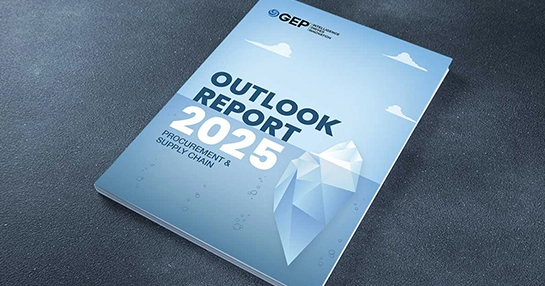What has the rapid globalization of supply chains led to? Cost benefits, of course. But it has also exposed them to economic and geopolitical unrest, demand fluctuations, natural disasters and unforeseen events. So, how can businesses safeguard operations?
Businesses must build resilient supply chains to minimize the impact of disruption on revenues, costs and customers. And they must engage in supply chain risk management to succeed in this endeavor. With GEP’s supply chain risk management services, you can proactively assess, prioritize, mitigate and manage risk for improved business results.
Extensive Risk Management Portfolio
Keeping supply chain optimization at the core, GEP embeds supply chain risk assessment and management into your supply chain strategy. Our focus on supply chain risk spans multiple dimensions, including geopolitical, environmental, industry, reputational, financial and operational.
We further segment these into short-term, medium-term and long-term risks to better prioritize action plans. We use our proprietary Supply Chain Risk Management Model to aggregate risks across the supply chain and catalog mitigation strategies for effectively addressing the identified risks.
Count on GEP
GEP’s comprehensive approach toward supply chain risk management helps companies implement the right structure, rigor and consistency in managing supply chain risk across multiple business units, functions and regions. Our unique combination of robust processes, big data feeds, augmented artificial intelligence, predictive analytics and reporting frameworks helps enterprises proactively identify and mitigate supply chain risk.
Multiple Input Sources
GEP’s supply chain risk management solution utilizes inputs from multiple client data sources (e.g. interviews, spend data, inventory levels, supplier scorecards, contract data, supplier audit data and surveys) as well as external sources (e.g. supplier financial performance, social media feeds, news articles and trend forecasts) to ensure that you are always a step ahead.
Augmented AI Data Analysis
GEP uses intelligent algorithms to consolidate and classify real-time data from thousands of sources to identify patterns and trends in your supply chain. A team of experienced analysts further augments these results and leverages predictive modeling to make specific recommendations on current and future risks.
Intuitive Reporting
With a wide array of real-time data inputs and extensive analysis engines, our supply chain risk management services deliver curated, actionable insights through supply chain management (SCM) dashboards tailored for executive and operational stakeholders, with multiple drill-down and alert options.
Prioritized Action Plans
GEP prioritizes each risk type based on event likelihood and business impact. Short-term risks and longer-term risks are tagged as “urgent” and “strategic,” respectively. We help you develop risk mitigation plans and escalation mechanisms.
FAQ
The supply chain risk management process starts with first identifying potential risks across the supply chain and ends with implementing action plans to finally mitigating those risks. In between, the process involves evaluating the probability of risks and their impact through risk analysis, and accordingly formulating targeted supply chain risk mitigation strategies. The process uses a holistic approach, utilizing AI-driven analytics that can consolidate real-time data from both internal and external sources to identify trends and patterns in an organization’s supply chain.
The different types of supply chain risk include common supply chain risks involving operational and production aspects, strategic risks, financial risks, and other risks.
Strategic risks include demand shifts, competitive pressures, and changing customer needs and preferences.
Financial risks include commodity price volatility, inflation, foreign exchange fluctuations and rising transport costs.
Other risks include regulatory and compliance risks, geopolitical instability, economic crises, natural disasters, cyberattacks, as well as public health issues such as pandemics.
Barriers to success of supply chain risk management initiatives include siloed organizational structures that impede collaboration and cross-functional engagement, lack of visibility across complex global supply chain networks, insufficient data and analytical capabilities, reactive organizational culture, and insufficient management commitment.
Staying ahead of supply chain risks first and foremost requires a proactive, preventative risk culture across the enterprise. Driving open communication and accountability across partners, providing risk management training to all stakeholders, and aligning risk strategies to enterprise objectives also play an important role in risk management of supply chains.
In addition, technology-based approaches such as real-time monitoring with the help of control towers, AI-driven predictive analytics for deep insights, and scenario planning are some of the indispensable tools to bolster supply chain risk management.



















